Results 6,911 to 6,920 of 12094
Thread: Anandtech News
-
05-02-17, 06:09 PM #6911
Anandtech: Acer Launches TravelMate Spin B1: Apollo Lake Convertible with Windows 10
Acer on Tuesday launched its new low-cost PC, the TravelMate Spin B1. The new entry-level mobile computer comes in a convertible form-factor and is powered by Microsoft’s newly-announced Windows 10 S operating system. The device is aimed at students and will rival various Chromebooks from both Acer itself as well as other suppliers.
The Acer TravelMate Spin B1 (B118) is based on Intel’s Apollo Lake platform featuring the Celeron N3450 SoC (four Goldmont cores clocked at 1.1 – 2.2 GHz, 2 MB cache, 6 W TDP, Intel HD Graphics 500 with 12 EUs) as well as Microsoft’s new Windows 10 S, which is a feature-limited edition designed primarily for the education market. Windows 10 S has a faster boot process and supports general features of the operating system (including the Cortana assistant), but can only run applications obtained from the Microsoft Store and has some additional limitations. The main purpose of the Windows 10 S is to enable Microsoft to better compete against Google’s Chrome OS-based laptops.
One of the key selling points of the TravelMate Spin B1 (apart from the OS) is its 11.6” IPS display with a 1920×1080 resolution, which additionally features 10-point multitouch and has a 360-degree hinge supporting notebook, tablet, display and tent modes. The capabilities of the display look rather advanced for an entry-level PC, and as a further kicker, Acer supplies the computer with an active stylus that supports the Windows Ink technology.

As for the other specifications, they seem to be in-line with other entry-level laptops available today. The TravelMate Spin B1 is equipped with 4 GB of DDR3L memory, 64 GB of eMMC storage, a dual-band 802.11ac 2×2 MIMO Wi-Fi, Bluetooth 4.0, a GbE port, USB ports, a webcam, an SD card reader, a touchpad, a spill-resistant keyboard, and so on.
The entry level system from Acer is 0.9” (23.4 mm) thick, it is made of plastic and weighs around 3.3 lb (1.5 kg), which is comparable to competing Chromebooks designed for education market.Acer TravelMate Spin B1 B118 Display 11.6" IPS panel with 1920×1080 resolution CPU Celeron N3450 (four Goldmont cores clocked at 1.1 – 2.2 GHz, 2 MB cache, 6 W TDP, iGPU) Graphics Intel HD Graphics 500 with 12 EUs RAM 4 GB of DDR3L Storage 64 GB eMMC Wi-Fi Intel Wireless-AC 2×2 802.11ac Wi-Fi Bluetooth Bluetooth 4.0 Ethernet GbE controller USB 1 × USB 3.0 Type-A1× USB 2.0 Type-ADisplay Outputs 1 × HDMIKeyboard Chiclet spill-resistant keyboard Other I/O Microphone, stereo speakers, audio jacks, webcam, SD card reader Dimensions Width: 291 mm/11.5"
Depth: 211 mm/8.3"
Thickness: 23.4 mm/0.9"Weight 1.5 kilograms Battery 4-cell battery, 13 hours battery life Price $299.99
The Acer TravelMate Spin B1 is available now from select retailers starting at $299.99 in the U.S. In the coming weeks and month, Acer plans to start sales of the product in other countries, but actual prices and configurations will differ there.
Gallery: Acer TravelMate Spin B1




Related Reading:
- Acer Announces The Rugged Chromebook 11 N7: Designed For Education
- Acer Adds 12-Inch Switch 3 & Switch 5 2-in-1s to Kaby Lake Laptop Lineup
- New Chrome OS Update Enables Google Play on Acer’s and ASUS' Chromebooks
More...
-
05-02-17, 06:54 PM #6912
Anandtech: Microsoft Announces Windows 10 S: RT Redux
Alongside the new Surface Laptop announced today in NYC, Microsoft also unveiled their next play with Windows 10. Windows 10 S launches as a fresh take on an old idea. The old idea was “What happens when you lock Windows to only using Store bought apps, like iOS” and Microsoft has obviously given this one try already with Windows RT. Based on Windows 8, but only available on ARM based PCs, and only able to run Windows Store apps, Windows RT was a complete disaster, and it was abandoned by the Redmond company shortly after it was released. Windows RT never even got the Windows 8.1 update.
It’s difficult to argue with the idea though. Windows has a fairly amazing support for legacy hardware and applications, but that same legacy opens it up to security vulnerabilities, and even applications which can wreak havoc on the system with excessive permissions, and unpatched issues. Anyone who chooses a Google Chromebook over a Windows PC does so, at least partially, to avoid these issues, and to enjoy the speed and reliability that comes with a locked down operating system.
Windows 10 S is Windows 10 inspired by students and teachers, and by inspired by, Microsoft means the know that they are losing the education market to Chromebooks in a big way. Chromebooks are cheaper, more reliable, easier to setup and configure, and quicker to get using in class. No teacher wants to deal with a 15 minute login process as all the students try to get logged in the first time on a slow laptop, and for these reasons, Chromebooks have really gained a foothold in the education market more than anywhere else.
Windows 10 S is Microsoft’s answer to that issue, but they are hoping for a broader adoption than just education. Honestly, it feels like the direction they want to go for Windows and although there are always going to be people who need access to apps outside of the store, we are certainly at a point where this makes more sense than it did when Windows RT launched.
There are some major differences with Windows RT though. First, Windows 10 S is not restricted to ARM laptops. For that matter, it’s also not restricted to x86 laptops, and it would make sense to see Windows 10 S available on ARM based PCs coming later this year. Second, Windows 10 S can be unlocked to Windows 10 Pro. So if you do need to use apps outside of the store, you can pay to have the system unlocked. Finally, the Store has changed as well, meaning this is not quite as restrictive as it once was.
The major change with the Windows Store since the days of Windows RT came with the Windows Desktop Bridge, code named Centennial, which actually came with the Windows 10 Anniversary Edition. This one bridge allows developers of traditional Win32 apps to easily package their apps for distribution in the Store. They are not UWP apps at this point, but they are packaged apps, much like you would see on a Virtual App, and the Store can be used to update these apps in the future, rather than having to force the end-user to either manually update, or live with yet another update service running on their PC.
Although we’ve not seen the UWP framework, or even the Desktop Bridge, have strong support yet, this is yet another carrot to entice developers to push their applications to the store. There are strong benefits for users, since apps are always up to date, and the installation process is simple, and uninstall is also simple. Apps can’t leave leftover registry keys or files, and it is a much better process than the traditional install methods.
Here’s a great example of how the Desktop Bridge helps the user experience. Adobe Photoshop Elements 15 is available in the Windows Store. Not only does this give you the install for up to ten devices, rather than one, the install is as simple as clicking Install in the Store, and waiting. We’ve all done this on iOS and Android, and once the app is downloaded, it runs. I use this program from the Store on a couple of my PCs, and it works great. But a friend called and was trying to install Adobe Photoshop Elements 15 on their Windows 7 laptop, and every time they tried to run it, it would give an error and quit. I remotely connected to the laptop, and it took about an hour to figure out it was their backup software preventing the application from installing. That software had to be disabled, the computer restarted, and then Photoshop Elements installed, and then the backup software enabled again. With Store apps, these kinds of issues don’t happen because each store app is sandboxed.
Windows 10 S is definitely Windows RT v2, but without being quite as restrictive. There is an option to unlock full Windows as well, which is something that was never available on RT. It should be more secure, and Microsoft showed off how much quicker it is to do tasks like deploying applications and logging in for the first time. We’ll have to wait and see how much traction they have in Education with this though, and the Windows Store, while vastly improved over what was available when Windows RT launched, still doesn’t offer the wide variety of applications like you would get in iOS. Unless Microsoft can get devs to embrace UWP or even the Desktop Bridge, it may be difficult to see this having much support.
The strength of Windows has always been its downfall, and that strength is the vast amount of legacy application support. Microsoft has tried before to wean people off of this legacy before, and they were not successful. Luckily, Microsoft is having their annual developer event in about a week, so we should learn more then in regards to their strategy to bring more apps to the Store.
Gallery: Microsoft Announces Windows 10 S: RT Redux



More...
-
05-02-17, 11:20 PM #6913
Anandtech: Apple Announces Q2 FY 2017 Earnings
This afternoon, Apple announced their earnings for the second quarter of their 2017 fiscal year. Revenue was up 5% year-over-year to $52.896 billion. Operating income for the quarter was up 6.6% to $14.097 billion, and net income was up just under 5% to $11.029 billion. This resulted in diluted earnings per share of $2.10.
Apple is also announcing they are expanding their capital return program, and the board has increased the capital return to shareholders another $50 billion, making the total program worth $300 billion in dividends and share repurchases by the time it wraps up in March 2019.
iPhone is still far and away the biggest part of Apple, but sales for this quarter were relatively flat compared to the same period a year ago. For the quarter, Apple sold 50.763 million iPhones, down 1% from a year ago, but with higher average selling prices, revenue was up 1% to $33.249 billion for the quarter. Of course, last quarter was the iPhone refresh, and they sold 78.29 million iPhones last quarter, so the business isn’t exactly doing poorly, but iPhone is the device that has transformed Apple, so we’ll have to see how sales go over this calendar year.Apple Q2 2017 Financial Results (GAAP) Q2'2017 Q1'2017 Q2'2016 Revenue (in Billions USD) $52.896 $78.351 $50.557 Gross Margin (in Billions USD) $20.591 $30.176 $19.921 Operating Income (in Billions USD) $14.097 $23.359 $13.987 Net Income (in Billions USD) $11.029 $17.891 $10.516 Margins 38.9% 38.5% 39.4% Earnings per Share (in USD) $2.10 $3.36 $1.90
Mac sales were strong though, considering the PC market. Mac had an increase in device sales of 4%, to 4.199 million units. With a new Mac Pro refresh, this is perhaps not as strong as expected, but revenue for the unit was up 14% to $5.844 billion, so they are making more per Mac sale.
Services seem to be the next big growth area for Apple, and with an install base of iPhones as high as it is, this is arguably a good way to capitalize on that base. Apple’s services segment, which includes revenue for digital content, AppleCare Apple Pay, licensing, and other services, had revenue growth of 18% to $7.041 billion. The difference with services compared to iPhone sales is that there isn’t the massive swing quarter to quarter either, with services only dropping 2% from Q1, compared to iPhone which dropped 39% from the holiday quarter.
The iPad continues its drop, and nothing Apple has done yet seems to have had any impact on this trend. iPad was down 12% in revenue year-over-year to $3.889 billion, and of course that’s still a huge amount of revenue, but when it has to compete against the iPhone it seems poorer than it is. In terms of device sales, Apple sold 8.922 million iPads this quarter, down 13% from a year ago where they sold 10.251 million.
Other products, which is where Apple puts Apple TV, Apple Watch, Beats, iPod, and accessories, actually had a solid quarter, with revenue up 31% to $2.873 billion. Apple never breaks down the individual parts of this though, which is understandable, but unfortunate.Apple Q2 2017 Device Sales (thousands) Q2'2017 Q1'2017 Q2'2016 Seq Change Year/Year Change iPhone 50,763 78,290 51,983 -35% -1% iPad 8,922 13,081 10,251 -32% -13% Mac 4,199 5,374 4,034 -22% +4%
Apple is forecasting revenue for Q3 to be between $43.5 and $45.5 billion, with a gross margin of 38% plus or minus 0.5%.
Source: Apple Investor Relations
More...
-
05-03-17, 07:47 AM #6914
Anandtech: AT20 Giveaway Day 6: Sapphire Sends Radeon RX 580s & Some Steins
We’ve hit the middle of the week, so that means it’s time for day 6 of our 20 day giveaway celebration of AnandTech’s 20th anniversary.
This morning we have some more video cards to give away, courtesy of Sapphire. Perhaps AMD’s closest board partner, the company has sent over one of each of their Nitro+ factory overclocked Radeon RX 580 card, and their slightly lower-key Pulse Radeon RX 580. The company has also sent over a bit of true swag, with a set of their steins. We have one each for the video card winners, and a 3 piece set for our third winner.
- Sapphire Nitro+ Radeon RX 580 & a Sapphire Stein
- Sapphire Pulse Radeon RX 580 & a Sapphire Stein
- Set of 3 Sapphire Steins
[TABLE="align: center"]
[TR="class: tgrey"]
[TD="colspan: 6, align: center"]Sapphire Radeon RX 580 Specifications[/TD]
[/TR]
[TR="class: tlblue"]
[TD="width: 187"] [/TD]
[TD="width: 230, align: center"]Sapphire Nitro+ Radeon RX 580[/TD]
[TD="width: 229, align: center"]Sapphire Pulse Radeon RX 580[/TD]
[TD="width: 229, align: center"]AMD Radeon RX 580
(Reference)[/TD]
[/TR]
[TR]
[TD="class: tlgrey"]Boost Clock[/TD]
[TD="align: center"]1411MHz[/TD]
[TD="align: center"]1366MHz[/TD]
[TD="align: center"]1340MHz[/TD]
[/TR]
[TR]
[TD="class: tlgrey"]Memory Clock[/TD]
[TD="align: center"]8Gbps[/TD]
[TD="align: center"]8Gbps[/TD]
[TD="align: center"]8Gbps[/TD]
[/TR]
[TR]
[TD="class: tlgrey"]VRAM[/TD]
[TD="align: center"]8GB[/TD]
[TD="align: center"]8GB[/TD]
[TD="align: center"]8GB[/TD]
[/TR]
[TR]
[TD="class: tlgrey"]TDP[/TD]
[TD="align: center"]
-
05-03-17, 10:11 AM #6915
Anandtech: Seagate Ships 35th Millionth SMR HDD, Confirms HAMR-Based Drives in Late 2
Seagate last week made two rather important announcements regarding its current and upcoming hard drives. First, the company said that it had shipped 35 million HDDs based on shingled magnetic recording (SMR) technology. Second, the manufacturer confirmed plans to launch commercial hard drives based on its heat-assisted magnetic recording (HAMR) technology by the end of 2018, the first time the company set a precise launch timeframe for such HDDs.
35 Million and Counting
Seagate launched the Archive 8 TB, its first HDD based on SMR, in 2013. Due to the technology, it targeted archive applications - the majority of the archival workload is sequential writes, and the data is hardly ever updated, concealing peculiarities of shingled magnetic recording. As reported multiple times, to increase areal density, HDDs featuring SMR write new magnetic tracks that overlap part of the previously written tracks. This may slow down the rewriting process since the architecture requires hard drives to rewrite adjacent tracks after any writing action. To mitigate such peculiarities, Seagate incorporated various features into its device-managed SMR-based drives, which were described by Mark Re (CTO of Seagate) in an interview last year. Over the course of the recent years, Seagate has introduced several generations of SMR-based drives for archive, nearline, NAS, surveillance and mobile PC applications. Each generation refined the use of shingled magnetic recording technology in a bid to improve performance (for example, Seagate added SLC NAND-based cache to its 2.5” SMR drives) as well as improving areal density.
During a recent call with investors and financial analysts, Stephen Luczo, CEO of Seagate, said that the company had shipped 35 million SMR-based hard drives and was about to launch its fourth generation of SMR-based HDDs. The head of the company did not elaborate on the benefits of the fourth-gen SMR, but Seagate has indicated that its platform is expandable for performance and areal density benefits. In fact, we already know from Western Digital’s announcement of a 14 TB HDD that the upcoming new-gen 3.5” SMR platters have a capacity of 1.75 GB per platter, so we expect Seagate to deal with disks of around the same areal density/capacity.
“We are successfully refreshing a number of products in our portfolio, utilizing our fourth generation SMR technology,” said Mr. Luczo. “To-date, we have sold over 35 million HDDs into the nearline client and consumer markets with this technology.”What is noteworthy is that shipments of SMR-based drives are accelerating as Seagate expands use of the technology. Seagate shipped around four million of SMR HDDs in the first two years (from September 2013 to September 2015) and then shipments of SMR HDDs have comparatively skyrocketed over the past six quarters.
The main reason why Seagate has managed to accelerate sales of its SMR drives significantly in a short period of time is because such HDDs are contained and managed in isolation, but also because they are drop-in compatible with existing data center and client infrastructure where these drives make sense the most. That being said, we suspect that certain large customers of Seagate still adjust their software before deploying such drives, eliminating unnecessary writes and thus optimizing performance and power consumption by another step from regular testing. To put Seagate's position into context, SMR-based HDDs from HGST are managed by hosts, which requires tangible investments from their customers. Even though the Ultrastar Ha-series is strictly aimed at clients who primarily appreciate raw capacities and relatively low power consumption (a feature of helium-filled HDDs), the integration issue is not such a big problem for Western Digital as the company still ships many high-margin products. Still, device-managed SMR expertise helps Seagate to address certain market segments with products that have no direct rivals. For example, the Seagate BarraCuda 2 TB HDD and the Seagate FireCuda 2 TB hybrid HDD have no direct competitors in the 2.5”/7mm segment.
One of Seagate’s targets going forward is to make products that do not compete against SSDs directly:
“By this time next year, we anticipate less than 10% of our HDD technology portfolio will be exposed to competing flash devices,” said Mr. Luczo.HAMR-Based HDDs Due in Late 2018
While it is inevitable that client HDDs will continue to compete with client SSDs, high-end special-purpose drives are going to complement what is available with NAND flash. High-capacity HDDs based on HAMR technology are not going to have direct flash-based rivals of the same price and capacity, therefore, it is important for Seagate to launch such drives sooner rather than later. During the conference call, Seagate indicated that HAMR-based HDDs are set to be released commercially in late calendar 2018.
“From an R&D technology perspective, we continue to invest in our next-generation areal density HAMR technology,” said Mr. Luczo. “With products on the roadmap for the late 2018 calendar year, we believe we are leading the market in developing and bringing to market this important cost-benefit solution for mass storage capacity needs.”This is not the first time that Seagate has made a HAMR-related announcement, but this is the first time when the company has set a particular launch timeframe for such drives. Previously, Seagate has implied that the first HAMR-based HDDs would feature a capacity of 16 TB, which is a significant increase from 12 TB hard drives due to be released in the coming weeks. Given the fact that data centers cry out for high-capacity drives, it is inevitable that HAMR-based HDDs with increased performance and higher capacities will be in high demand. Keeping in mind that late 2018 (by “late” companies usually mean the fourth quarter) is over a year away, Seagate is not sharing details about experimental deployments of HAMR-based HDDs that may be planned for 2017/early 2018.
Related Reading:
- Seagate Announces Enterprise Capacity 12 TB HDD: 2nd-Gen Helium-Filled Hard Drives
- Seagate Confirms Plans for 12 TB HDD in Near Future, 16 TB HDD Due in 2018
- Western Digital Expands Purple Lineup with a 10 TB Helium-Filled HDD
- Western Digital Announces Ultrastar He12 12 TB and 14 TB HDDs
- Seagate to Shut Down One of Its Largest HDD Assembly Plants
- Seagate Introduces BarraCuda 2.5” HDDs with Up to 5 TB Capacity
More...
-
05-03-17, 01:12 PM #6916
Anandtech: AT20 Giveaway Day 6.5: Thermaltake View 31 Case & Smart Pro Power Supply
For this afternoon’s giveaway, we have a pair of prizes from the crew over at Thermaltake. The case, cooling, and peripheral manufacturer has sent over both their View 31 Tempered Glass case and their Smart Pro RGB 850W Bronze PSU. Whether you need a case for a new PC build, or a more powerful PSU for a system upgrade, this afternoon’s prizes should have you covered.
- Thermaltake View 31 Tempered Glass Case
- Thermaltake Smart Pro RGB 850W PSU
The AnandTech 20th Anniversary Celebration – Thermaltake Giveaway
Thermaltake View 31 Tempered Glass Case
Our literally big prize of the day, Thermaltake’s View 31 case is an interesting deviation from the usual mid-tower case. The marquee feature for the case is its tempered glass windowed side panels, which the company touts for its large size and the improved durability of glass over traditional plastic windows. The case also forgoes any 5.25” bays, making full room for its fully modular internal bays and plenty of cooling options.
The case comes with a pair of 140mm Riing fans with blue LED lighting pre-installed, with one fan for intake and a second fan for exhaust, with plenty of room left over for additional fans and radiators. Meanwhile the extra-wide case also sports an unusual feature: a space for vertically mounting a video card to keep the weight off of the motherboard.
Thermaltake Smart Pro RGB 850W PSU
Our second prize of the afternoon is Thermaltake’s 850W Smart Pro RGB PSU. This is a fully modular PSU – ATX cable and all – with up to 4 PCIe 8 pin power connectors. On the power delivery side, the Smart Pro is rated for 80Plus Bronze, while delivering up to 70.5A (846W) on the 12v rail. Living up to its “RGB” name, the PSU’s 140mm fan features 256-color RGB lighting, and as an added kicker can shut off entirely in low load/temperature conditions for silent running.
Finally, as with our other giveaways, today’s giveaway is only open for 48 hours, so be sure to enter soon. However please note that for legal reasons, we’re only able to open these giveaways to residents of the United States.
Good luck to everyone! And be sure to check in tomorrow for our next giveaway.
More...
-
05-04-17, 07:55 AM #6917
Anandtech: AT20 Giveaway Day 7: Crucial Helps You Remember DDR4 RAM & SSDs
We’re back again for day 7 of our 20 day giveaway celebration of AnandTech’s 20th anniversary, so I hope everyone is ready to win some prizes. At this point we’re just about one-third of the way through the giveaway, so if you haven’t won yet, there’s still plenty of time.
This morning we’re giving away our first memory kits, along with another SSD. The crew over at memory superstar Crucial has sent over a variety of 16GB (2x8GB) Ballistix memory kits for us to give away: the Sport LT DDR4-2400, the Tactical DDR4-2666, and the Elite DDR4-3000. And should you need something a little more permanent, we have a 525GB MX300 SSD as well.
- Crucial Ballistix Sport LT Grey, DDR4-2400, 16GB (2x8GB)
- Crucial Ballistix Tactical, DDR4-2666, 16GB (2x8GB)
- Crucial Ballistix Elite, DDR4-3000, 16GB (2x8GB)
- Crucial MX300 525GB SSD
The AnandTech 20th Anniversary Celebration – Crucial Giveaway
Crucial Ballistix Sport LT, DDR4-2400
Starting things off, we have a 16GB kit of Crucial’s Ballistix Sport LT memory. This kit runs at DDR4-2400 with 16-16-16 timings, and a voltage of 1.2v. The entry-level tier of Crucial’s Ballistix memory, these DIMMs feature a grey metal heatspreader and come loaded with an XMP 2.0 profile for use in systems that don’t recognize DDR4-2400 as a valid JEDEC-standard memory speed.
Crucial Ballistix Tactical, DDR4-2666
Taking things up a step, we also have a 16GB kit of the company’s Ballistix Tactical memory. This is a DDR4-2666 kit with 16-17-17 timings, and still only 1.2v. The Tactical is Crucial’s mid-tier memory, and building on top of the Sport, features an all-black aesthetic with a gunmental grey heatspreader over a black PCB.
Crucial Ballistics Elite, DDR4-3000
Third up is this 16GB kit of Crucial’s Ballistix Elite memory. The Elite kit runs at DDR4-3000 with 15-16-16 timings, making it one fast DDR4. Though it should be noted that it does take a bit of overvolting to get there, with a 1.35v DIMM voltage. The Elite builds off of the Tactical’s all-black look with a larger finned heatspeader, but also includes support for Crucial’s MOD utility, which allows for real-time memory temperature monitoring, making this the only kit with that feature.
Crucial MX300 SSD, 525GB
Last but certainly not least, Crucial has also sent over one of their MX300 SSDs for those of you who need a bit more permanent storage. The MX300 is a TLC 32-lay 3D NAND based drive, using Micron’s own in-house memory along with a Marvell 88SS1074 controller. As a mid-range drive the MX300 should be a workhorse, and as Billy Tallis noted in our review of the 750GB MX300, anyone looking to install it in a laptop should be especially pleased with the low power consumption, which beats even a number of MLC-based drives.
Finally, as with our other giveaways, today’s giveaway is only open for 48 hours, so be sure to enter soon. However please note that for legal reasons, we’re only able to open these giveaways to residents of the United States.Crucial MX300 525 GB Specifications MX300 525 GB Controller Marvell 88SS1074 NAND Micron 384 Gbit 32-layer 3D TLC Seq Read 530 MB/s Seq Write 510 MB/s 4K Rand Read 92K IOPS 4K Rand Write 83K IOPS DevSleep 4mW Slumber Power 75mW Encryption TCG Opal 2.0 & IEEE-1667 (eDrive) Write Endurance 160 TB
Good luck to everyone! And be sure to check in this afternoon for our next giveaway.
More...
-
05-04-17, 07:55 AM #6918
Anandtech: Intel Unveils the Xeon Scalable Processor Family: Skylake-SP in Bronze, Si
One of the more interesting elements of last week’s news was that some of the names of the future Intel Xeon processors, based on the Skylake microarchitecture, were accidentally ‘leaked’ via an official Intel Product Change Notification. In that list, we learned that the processors will have a new naming scheme, and we saw Gold and Platinum processors based on the LGA3647 socket having a wide range of numbers, but no core counts or clock speeds.
Today’s unveiling is minor, but an official approach to the new platform. Due to the way that Intel is expanding its reach from processors to networking to FPGAs and byeond, it has been decided that a new naming scheme needs to be in place. Thus the Xeon E/EP/EX naming regime is being reintegrated into what is now called the ‘Xeon Scalable Processor Family’, of which the first set of products will be based on the Skylake microarchitecture. This is where the ‘SP’ in ‘Skylake-SP’ comes from, as the other abbreviations are now retired.
The core of Intel’s unveiling today revolves around the different processor levels they will be offering, and where the new integrated options will fit in the new stack. In the slide above, Intel lists three integrated options: Omni-Path, Networking, and Accelerators.
Integrated Omni-Path options have already been seen in Xeon Phi based products from the Knights Landing family, which occupy the same LGA3647 socket, so it is perhaps not surprising that it looks like Intel will offer some Skylake-SP Xeons with Omni-Path also integrated.
Integrated Networking (asides from OmniPath) would suggest that Intel is looking towards deeper 1GBase-T options and even perhaps a not to 10G, although this would most likely be provided by additional options on the chipset rather than on the processor (and stems from system integrator leaks we have already seen.
As for integrated accelerators, here Intel mentions Intel QuickAssist (QAT) and AVX-512. AVX-512 is the next advancement in AVX instructions and we already see them in use with Xeon Phi, and we expect there to be the capabilities in silicon to run AVX-512 natively in Skylake-SP. Intel’s QAT is something we’ve seen in standalone PCIe cards before, so it would seem that Intel is also integrating this into the platform. After speaking with users familiar with QAT, due to what is needed to get QAT running at full speed, it would suggest that QAT will be chipset derived and platform dependent rather than purely on the processor.
On the right hand of this slide, Intel mentions FPGA, Nervana, Xeon Phi and Silicon Photonics. The acquisition of Altera for $16.7 billion in 2015 put FPGA integration firmly on the roadmap for Intel’s Xeon product line, however Intel has not officially stated how these will be provided with the new Xeon-SP platforms. The fact that it isn’t listed under the integrated options suggests that Intel will only offer FPGAs as add-in cards (or add-in processors, like Xeon Phi, for dual socket systems) at this time. Intel is also working on new optimized frameworks for the hardware, particularly math and AI libraries.
So along with the Gold and Platinum processors we saw last week, Intel will also be introducing Bronze and Silver grades as well. The Bronze group is aimed at entry performance, which sounds like the older low core count E5 parts, while the Silver parts seem aimed at lower power and will probably be low base frequency parts. The Xeon Gold family is aimed at accelerators and interconnects, which suggests they will be for multi-GPU or multi-socket platforms, while the Xeon Platinum will be the cream.
Despite this potential correlation, we were told in our briefing, given by Lisa Spelman, VP and GM of the Data Center Group, that the previous E5/E7 naming split due to potential socket configurations goes away and now we should expect to see various CPUs in all segments correlating to a variety of socket configurations. One of the reasons for this is that sometimes a customer could take advantage of an 8-socket variant processor (due to high cache per core, for example), but would never consider it because the customer only needed a two-socket configuration. One of the reasons given for the naming is to alleviate this issue.
It also means that we might see a lot more product SKUs coming to market, each with different configurations, naming, and capabilities depending on the accelerators. Typically Intel produces three dies for each Xeon generation – a low core count (LCC), a medium/high core count (MCC/HCC), and an extreme core count (XCC) version, and we see a variance up and down the stack depending on what dies fit in where: e.g. LCC were for single socket. With the new Scalable Processor Family naming scheme, we were told that Intel is trying to move away from this differentiation and just provide what the customer needs in the right segment. Not so much integration through obfuscation, but I kindly requested that when the official announcements are made, that the differentiations were made clear. Given the Gold/Platinum processor lists last week, it was unclear exactly what the numbering schemes represented, so in order to make the transition, it needs to be crystal clear.
We were told that as this is the first generation of the Xeon-SP naming scheme, the generation is omitted from the name, but future product lines (Kaby Lake-SP) will have a generational marker to denote the difference. This may be in the form of v2/v3, but this isn't clarified at this time.
Intel isn’t announcing any products today. This is more of an opportunity to take hold of the news that already exists, and perhaps get a step up ahead of the upcoming conference season. We were told to expect a launch in the middle of the year, and were told that Intel is still on track for that.
Gallery: Intel Unveils the Xeon Scalable Processor Family: Skylake-SP in Bronze, Silver, Gold and Platinum





More...
-
05-04-17, 08:42 AM #6919
Anandtech: Imagination to Double-Down on GPU Business, MIPS and Ensigma to Be Sold
Just over a month ago, Imagination Technologies dropped the bombshell announcement that their largest customer, Apple, would be phasing out their use of Imagination’s GPU IP in their SoC GPU designs. Specifically, Apple expects that they will no longer be using Imagination’s IP for new products in 15 to 24 months. This put Imagination in a significant pinch, as Apple is a full half of the company’s overall revenue and 69% of their GPU revenue. As a result, Imagination stands to lose of their GPU revenue starting two years down the line.
At the time the company announced that they would be engaging with Apple to discuss “potential alternative commercial arrangements” to the companies’ current agreement, and now a month later, Imagination has published a further update on that. Discussions in the last month have not made what Imagination considers satisfactory progress, and as a result they are escalating the discussion to go through the dispute resolution clause of their current contract.
Just what this will entail is unknown since the contract isn’t public, but as Imagination so delicately puts it, they’re seeking to reach an agreement with Apple “through a more structured process.” It’s unknown what will happen if this process fails, but for the moment it does not appear that a further escalation is off the table. If nothing else, Imagination will have the option of taking Apple to court for patent and IP violations once the current agreement expires. Though the company is also making it clear that they’d rather not go that far; it’s hard to imagine Imagination wants to go toe-to-toe with the richest company in the world, especially once their revenue takes a significant hint.
Meanwhile in Imagination’s bombshell of the month, alongside today’s Apple update, the company is also announcing that they are going to be refocusing the company to focus entirely on the GPU business. To that end, the company is putting their remaining non-GPU businesses – the MIPS CPU business and the Ensigma communications business – on the market. Imagination is not listing an expected price for either business at this time – or if they have already lined up any suitors – but the company believes that given the improved fiscal performance of these two divisions, that they are in a good position to sell the two divisions.
MIPS and Ensigma have been two of Imagination’s major efforts to diversify the company away from their original core business of GPU IP. MIPS was acquired by Imagination for $60M in 2012 – about 4.5 years ago – while Ensigma has been part of the company since the turn of the millennium. MIPS in particular has been a long-running architecture in the embedded space, and along with x86, is the other alternative CPU architecture supported by Google’s Android OS. So the news that the engineering team and product portfolio behind the #2 architecture in mobile and embedded are being sold is a major development. MIPS and Ensigma join Imagination’s Pure business, which is also in the process of being sold off.
In announcing this latest sale, Imagination noted that they are doing this to strengthen their balance sheet. At the risk of reading too much into a short fiscal statement, this doesn’t sound like a move that they are making with gusto, but rather something they have to do to save the company. Selling these divisions means that the company’s efforts to diversify have failed, but given their situation, it appears that focusing on their core competency is their best bet. Still, it does risk certain efforts in the long-term, such as Imagination’s OmniShield virtualization security technology, since that was a synergy play between owning both CPU and GPU IP.
As for Imagination’s GPU business, the sale of MIPS and Ensigma means that Imagination will be transitioning to a pure-play GPU IP provider. The company continues to develop new IP here, including the recent Furian architecture, so they have products. The question that remains is how they will survive (and ideally thrive) a post-Apple world; even if the companies sign a new agreement, Imagination’s fate is going to be based on how well they can sell GPU IP to the remaining SoC vendors, particularly in the STB and Android mobile spaces. With all other businesses in the process of being sold, the fate of Imagination’s GPU business will determine the fate of Imagination itself.
More...
-
05-04-17, 10:45 AM #6920
Anandtech: Palit GeForce GTX 1080 Ti HOF Limited Edition Announced: 1.75 GHz and Onbo
Palit Microsystems plans to release a new factory-overclocked limited edition graphics adapter based on NVIDIA’s GeForce GTX 1080 Ti GPU under its GALAX and KFA2 brands. The card was developed from scratch and will be among the highest-performing video cards in the industry due to a rather extreme GPU frequency. It also comes with exclusive features that will further push it up on price.
The GeForce GTX 1080 Ti HOF Limited Edition graphics adapter from GALAX and KFA2 are based on NVIDIA’s GP102 GPU, clocked at 1645/1759 MHz (base/boost) and suses a custom 12-layer PCB developed by Palit. The add-in-board (AIB) features a 12+3-phase VRM and three 8-pin PCIe power connectors in a bid to guarantee stable operation of the GPU at significantly increased clock rates (165/177 MHz higher than NVIDIA’s recommendations) and enable further headroom for overclocking.
To cool down the GPU and memory, Palit uses a special cooling system that relies on a huge heatsink with five thick heatpipes as well as three fans. As an added bonus, the cooling system is equipped with an LCD screen that displays current GPU and memory frequencies, the GPU temperature, the GPU voltage and other important information. Since the cooler is very large, it takes three slots, meaning multi-GPU system builds with this card more complicated. Traditionally, large cooling solutions are equipped with a backplate and the cooler on the GeForce GTX 1080 Ti HOF Limited Edition is not an exception. As for outputs, the graphics adapter comes with three DisplayPort 1.4 headers, one HDMI 2.0b and one DVI-D.
With its factory overclocked GPU, the GeForce GTX 1080 Ti HOF Limited Edition from GALAX and KFA2 is going to be one of the highest-performing gaming graphics cards around. In fact, single precision compute performance of the AIB will be between 11.79 and 12.6 TFLOPS (depending on exact frequency), which is higher than that of NVIDIA’s Titan X and Titan Xp. The latter still have advantages when it comes to ROP count and memory bandwidth, but in at least certain cases the GTX 1080 Ti HOF Limited Edition is going to be faster.
Meanwhile, pricing of the GALAX/KFA2 GeForce GTX 1080 Ti HOF Limited Edition will match pricing of the two aforementioned cards that are sold exclusively by NVIDIA for $1200. Overclockers UK offers to pre-order the card from KFA2 for £949.99 (with ETA in late May), which equals to $1227. It is noteworthy that in the UK the card will be called the KFA2 GeForce GTX 1080 Ti HOF 8 Pack Edition, after professional overclocker 8 Pack who works for Overclockers.NVIDIA GPU Specification Comparison NVIDIA Titan Xp GALAX/KFA2
GeForce GTX 1080 Ti HOF Limited EditionNVIDIA
GeForce
GTX 1080 TiNVIDIA Titan X
(Pascal)NVIDIA GeForce GTX Titan X
(Maxwell)CUDA Cores 3840 3584 3584 3072 Texture Units 240 224 224 192 ROPs 96 88 96 96 Core Clock 1481 MHz? 1645 MHz 1481 MHz 1417 MHz 1000 MHz Boost Clock 1582 MHz 1759 MHz 1582 MHz 1531 MHz 1075 MHz TFLOPs (FMA) 12.1 TFLOPs 12.6 TFLOPs 11.3 TFLOPs 11 TFLOPs 6.1 TFLOPs Memory Clock 11.4 GT/s GDDR5X 11 GT/s
GDDR5X10 GT/s GDDR5X 7 GT/s GDDR5 Memory Bus Width 384-bit 352-bit 384-bit 384-bit RAM 12 GB 11 GB 12 GB 12 GB RAM Bandwidth 547.2 GB/s 484 GB/s 480 GB/s 336 GB/s FP64 1/32 FP16 (Native) 1/64 N/A INT8 4:1 N/A TDP 250W 250W++ 250W 250W 250W GPU GP102 GM200 Transistor Count 12B 8B Die Size 471mm2 601mm2 Manufacturing Process TSMC 16nm TSMC 28nm Launch Date 04/06/2017 ~05/2017 03/10/2017 08/02/2016 03/17/2015 Launch Price $1200 ~$1200 $699 $1200 $999
Gallery: GALAX/KFA2 GeForce GTX 1080 Ti HOF Limited Edition





Related Reading:
- GALAX and KFA2 Katana: Single-Slot GTX 1070 GPUs Coming Soon
- NVIDIA Announces NVIDIA Titan Xp Video Card: Fully Enabled GP102 for $1200
- The NVIDIA GeForce GTX 1080 Ti Founder's Edition Review: Bigger Pascal for Better Performance
- NVIDIA Announces Quadro GP100 - Big Pascal Comes to Workstations
Sources: GALAX, KFA2
More...
Thread Information
Users Browsing this Thread
There are currently 35 users browsing this thread. (0 members and 35 guests)






 Quote
Quote
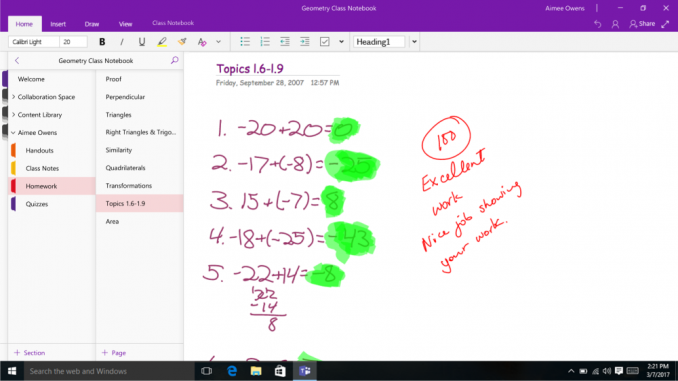
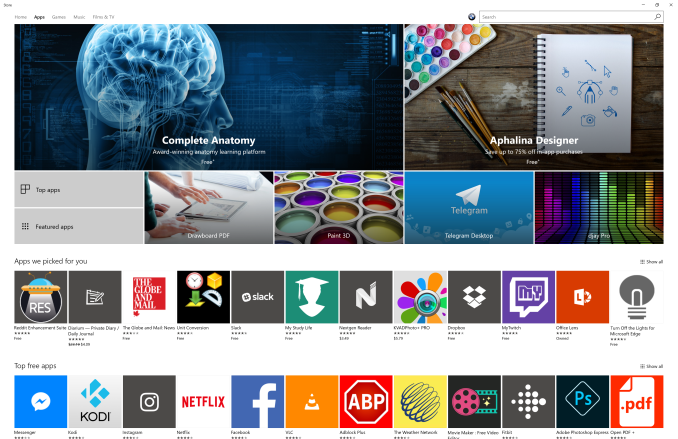
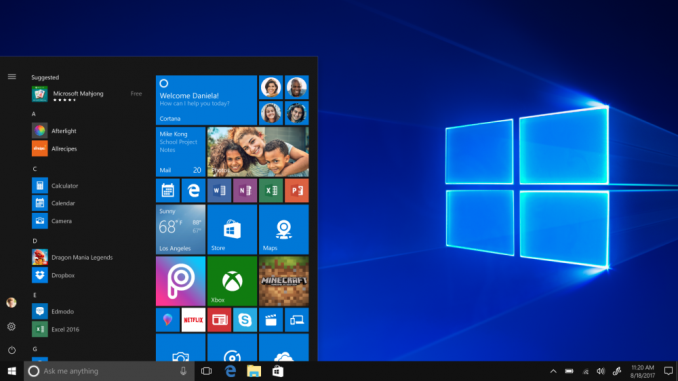

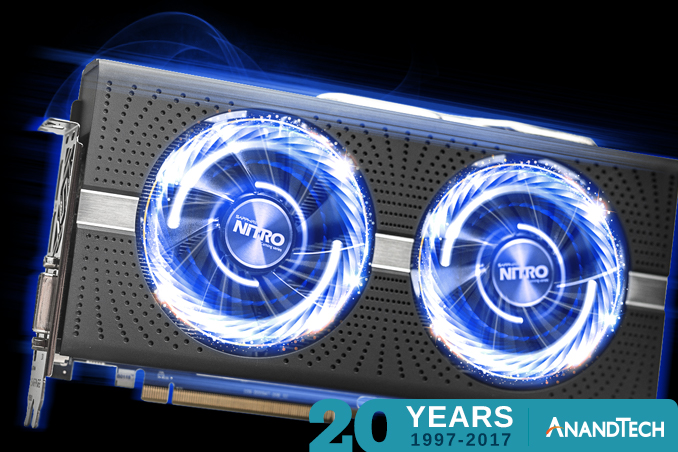










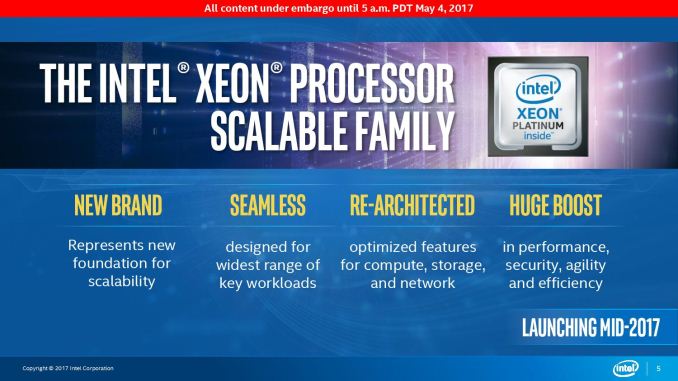
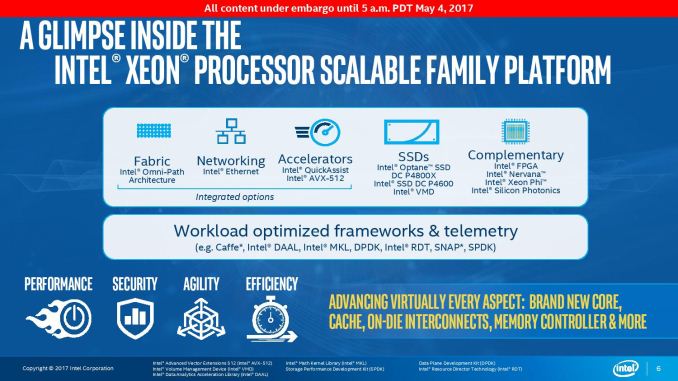
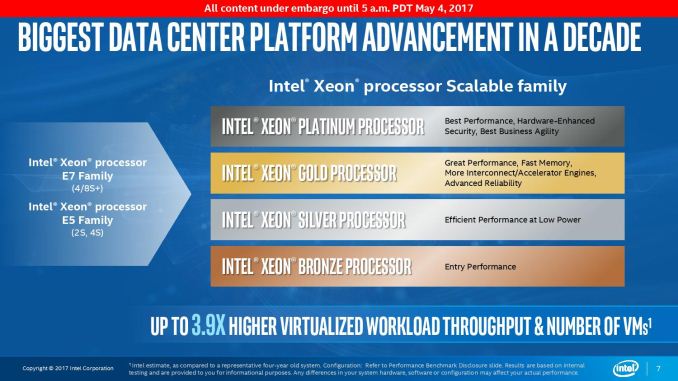
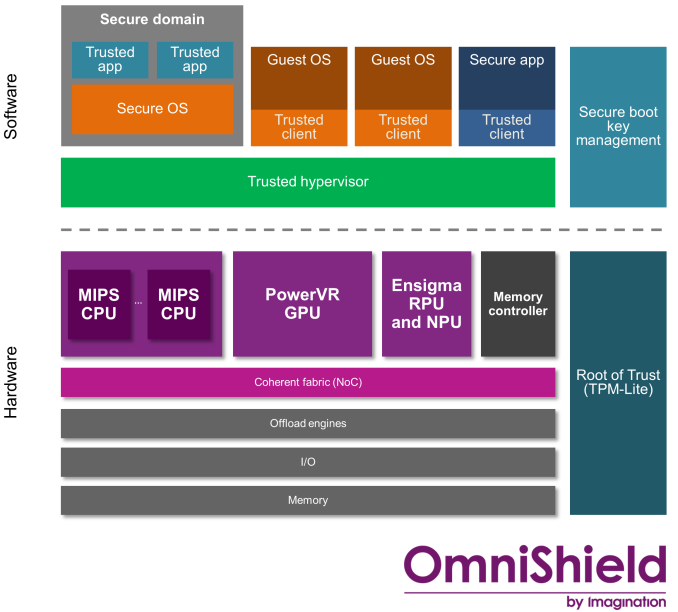
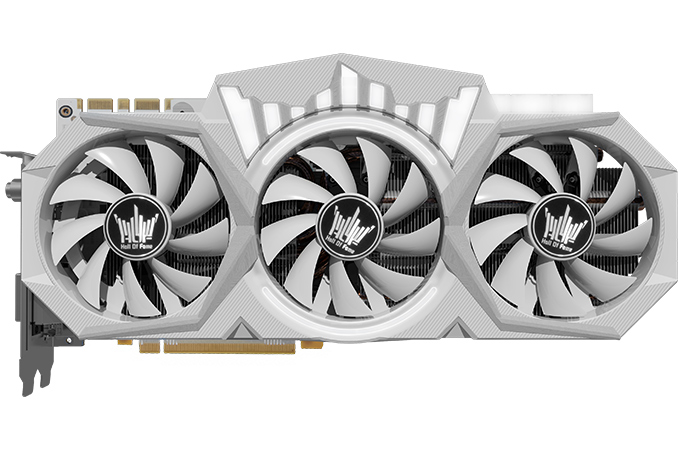


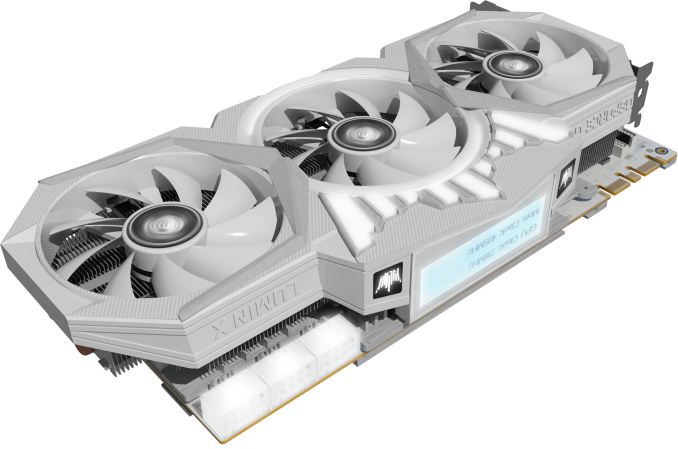
















Bookmarks